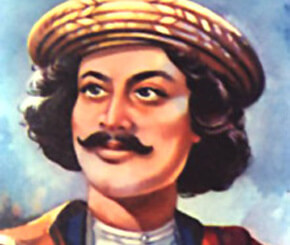Hi Everyone!! This article will share Indian Renaissance Objective Type Questions & Answers.
In my previous post, I have shared Indian Renaissance Objective Type Questions & Answers so, make sure to check that post as well.
Indian Renaissance Questions & Answers
Question 1: Name a few evil practices responsible for the pitiable condition of women.
Answer: Many evil practices such as female infanticide, child marriage, marriages between young girls and aged men, prohibition of widow remarriage, dowry system, purdah system and polygamy were responsible for the pitiable condition of women.
Question 2: Who established the Shree Narayana Dharma Paripalana Yogam?
Answer: Sri Narayan Guru established the Shree Narayana Dharma Paripalana Yogam.
Question 3: Define Indian Renaissance.
Answer: A critical outlook on the past and new aspirations for the future marked a new beginning called Indian Renaissance.
Question 4: Who was the Parsi reformer campaigned against the child marriage?
Answer: Several social reformers such as Behramji Merwanji Malabari campaigned against the child marriage.
Question 5: Where was the headquarter of Theosophical Society situated in India?
Answer: The headquarter of Theosophical Society was situated at Adyar in Chennai.
Question 6: Write a short note on Sikh Reforms.
Or
How the reform movements were initiated among the Sikhs?
Answer:
- Religious reforms among the Sikhs were initiated by the establishment of the Singh Sabha all over the country for the strengthening and purification of Sikh life.
- It worked to promote education in Sikh society. The leaders of the Sabha established Khalsa College at Amritsar in 1892. It sought to rid Sikhism from the prevailing superstitions and caste distinctions and to bring modernisation.
- Later the reformist tradition was continued by the Akali Dal which started a powerful movement to reform the Gurudwaras.
- The Mahants who looked after the Gurudwaras viewed the religious place as their personal property.
Indian Renaissance Questions & Answers
Question 7: Observe the picture and answer the questions related to it:

(a) Identify the person.
Answer: Raja Rammohan Roy
(b) What is he popularly known as?
Answer: He is popularly known as Father of Modern India.
(c) Name the reform association founded by him.
Answer: Brahmo Samaj
(d) What reforms were brought about by him with regards to women?
Answer:
- Raja Rammohan Roy wanted to improve the condition of Indian women and bring about greater freedom and equality for them.
- He encouraged education for women and campaigned against the practice of sati. He tried to prove through his writings that the practice of sati was not permitted by the Hindu Shastras.
- His campaign though roused the hostility of the orthodox section of people against him but eventually in 1829, he succeeded in imposing a ban on sati under Governor- General Lord William Bentinck.
- He played a notable part in improving the condition of widows.
- He also opposed polygamy. He advocated widow remarriage and fought against child marriage.
Question 8: Discuss the role of Periyar to eradicate untouchability.
Answer:
- E.V Ramaswamy Naicker popularly called ‘Periyar’ fought against the tyranny of the upper caste of the social order and worked to eradicate social evils such as untouchability.
- He started a social reform movement known as the Self Respect Movement. This movement denied the authority of the Brahmins.
- According to him, the Brahmins had subjugated the original Tamil and Dravidian culture and the true upholders of it were the untouchables.
- He criticized the ancient Hindu scriptures and law books which not only established the authority of the Brahmins over lower castes but also the domination of men over women.
Question 9: Describe the contribution of Dr. B.R. Ambedkar.
Answer:
- Throughout his life, Dr. B.R. Ambedkar fought for the rights of down-trodden.
- He worked persistently to weed out the roots of untouchability and caste system.
- He founded All India Scheduled Caste Federation.
- He founded the Bahishkrut Hitkarini Sabha to spread education among the depressed classes and to represent their grievances before the government.
- He started a temple entry movement of the Dalits for the entry into the kalaram Temple at Nashik.
- He led one of the most significant satyagraha at Chavdar lake in Mahad to assert the right of the untouchables to draw water.
- Dr. B.R. Ambedkar started journals such as the Muknayak, Bahishkrit Bharat, Janata and Samata to present the problems faced by the untouchables.
- He not only fought for the rights of the Dalits but also to improve the condition of women.
- While drafting the Indian Constitution he made provisions related to their welfare.
Question 10: The introduction of English education changed the outlook towards socio and religious ideas. Give reasons.
Answer:
- The British rule in India from 1757 to 1758 witnessed an outburst of intellectual activity and change in the outlook towards socio and religious ideas.
- This was largely due to the introduction of English education which enabled the Indians to get acquainted with Western ideas and knowledge.
Question 11: The caste system had hampered social mobility.
Answer:
- Another debilitating factor that hampered social mobility was the caste system.
- It created social divisions in the society which was largely based on inequality, exploitation and injustice.
- The caste system placed Brahmins at the top and shudras at the lowest rung of the pyramid.
So, these were Indian Renaissance Questions & Answers.